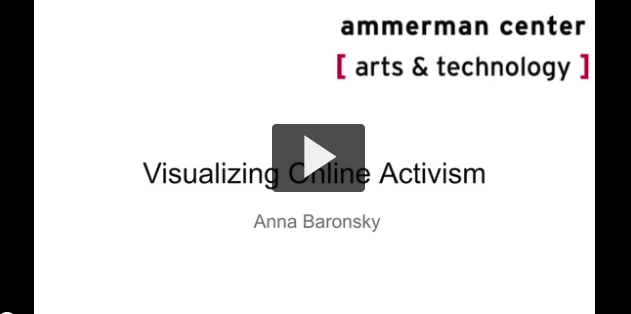“Visualizing Online Activism,” a speculative design to humanize and visualize online petitions through video and audio, in order to amplify the scope and support for grassroots calls to action
By: Anna Baronsky ‘21
Advising Faculty: Andrew Greenwald
Majors: Art
Internship: Green River Stone Company, Fly Creek, NY, and World Back to Work, Los Angeles, CA
Project/Mission Statement
The summer of 2020 was filled with historic moments of COVID-19 lockdowns, BLMprotests, rampant wildfires, and many others. Through academic projects and personal projects I sought to archive and document the cultural reset and shift we all experienced in some capacity. I noticed that while some people organized, protesting systemic racial injustice in person, others educated themselves through shared online resources and various literature. Many people found ways to donate to bail funds, local activist organizations, and GoFundMe’s and devoted time completing small actionable tasks, such as calling state representatives, composing emails, or signing petitions, in the hopes of creating a safer, more equal and just society.
I see my engagement in petition signing as “slacktivism”—the act of supporting a cause through social media or online petitions that involves little commitment—and while acknowledging the minuscule impact my signature has on Change.org, I still feel compelled to add my name to worthy causes. Over the summer I witnessed how the “Justice forBreonna Taylor” petition had circulated social media and amassed nearly 12 million signatures, and many more now know of her story, who she was, and how there have been no murder charges for the officers responsible for her killing.
Even though singing a petition is considered “slacktivism,” I believe there is value in seeing a tangible number of people who have decided to support specific causes and movements as data. My speculative design aims to convey the human connection present in data gathered from Change.org. The speculative design is a tool that allows users of petition websites to visualize the total signatures as representations of people who are all trying to communicate their support for the petition. Through the use of Maya animations, 3Dmodeling, and audio, the tool aims to bridge slacktivism—as a hollow but genuine act—and human connection to a larger movement. In creating this tool, I hope to convey a quantum of energy, rather than a static webpage, that divulges information about individuals supporting a cause, leading someone to add their signature to a petition and effect change.
Related Fields: Ammerman Center
